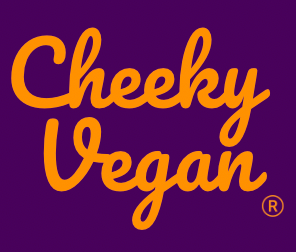Why Is Swiss Chocolate So Good?
As lovers of Cheeky Vegan will already know, our chocolate is crafted in Switzerland, a country renowned for its chocolatiers.
When you think of the best chocolate you’ve ever tasted, it’s likely a Swiss brand that comes to mind. However, you might not be able to put your finger on why Swiss chocolate is so good.
Today we’re exploring why chocolate from Switzerland has such an amazing reputation and going back in time to discover the story behind it!
What Makes Swiss Chocolate So Special?
Swiss chocolate has a long and exciting history, with some of the most significant developments in chocolate evolution occurring in the country.

To maintain its reputation for chocolate excellence, Switzerland has strict regulations for the production process. These standards are upheld by the Swiss government, as well as various industry associations and organisations.
The regulations ensure every chocolate bar contains a certain amount of cacao (which varies depending on the type of chocolate), criteria are met regarding the quality of the ingredients and industry best practices are adhered to. It’s also key that at least 80% of the production process takes place in Switzerland for a chocolate bar to earn the coveted Swiss label.
What’s more, Swiss chocolatiers have a dedication to innovation, continuously experimenting with new ideas, techniques and flavours.
When it comes to developing new flavours, it’s not uncommon for chocolatiers to try different sweet and savoury ingredients, such as various fruits, nuts, spices, and even herbs. These variety of flavours often come in the form of limited editions. For instance, Toblerone, one of the iconic Swiss chocolate brands has released a range of limited-edition flavours over the years, such as the Pink bar made from white chocolate, tart raspberries and sweet strawberries and the Golden Caramel Crunchy made with toasted corn, popcorn and salted caramel chips.
Another great aspect of chocolate production in Switzerland is the commitment to collaboration, with chocolatiers often working with other experts and producers to develop new and exciting products. For instance, Swiss brand Max Chocolatier based in Lucerne works with local artists and designers in developing new creations. Another example is Cailler which collaborates with local artisans and farmers to incorporate regional flavours into their products.
What About Vegan Swiss Chocolate?
Although the history of Swiss chocolate is intertwined with dairy milk, it’s now easy to find dairy-free and equally delicious options.

It wasn’t until the end of the 20th century that Switzerland began to produce vegan chocolate. But, since then, there’s been a boom in brands offering plant-based alternatives.
By replacing traditional dairy ingredients with animal-product-free alternatives, such as milks made from almonds, soy, rice, coconuts or oats, Swiss chocolatiers mastered the art of vegan chocolate. This means consumers can now discover a range of plant-based options, including milk chocolate bars, pralines, truffles and more.
Despite not using dairy milk, these vegan innovations are made with the same Swiss heritage techniques and craftsmanship, resulting in the expected exceptional quality.
A History Lesson in Swiss Chocolate
Although cocoa has been enjoyed for thousands of years, Switzerland was one of the very first countries to craft bars of chocolate, as far back as the early 1800s.
Towards the end of the same century, Swiss entrepreneur Daniel Peter became the very first person to blend chocolate with dairy milk successfully, creating milk chocolate and securing Switzerland’s place in chocolate history.
The addition of milk not only resulted in a smoother and more palatable bar but also reduced production costs as less cocoa was required. This was a significant turning point for chocolate manufacturers and led to more and more people discovering a taste for it.

The quality of Swiss chocolate was further enhanced by Rodolphe Lindt’s conche machine, which he invented in 1879. With the conche, ingredients can be mixed in a way that results in a smoother, creamier and tastier bar.
Over the next decade or so, more and more chocolate factories popped up in Switzerland, boosting production capacity and dominating the global chocolate market.
With increased demand naturally came a need for more cocoa. This led to a boom in cocoa production in West Africa, which shows how the impact of chocolate innovation was felt around the world.
Still want to know more? Read on for seven fascinating facts about Swiss Chocolate!
Seven Swiss Chocolate Facts
- Switzerland exports chocolate to over 120 countries worldwide, totalling around $887 million a year.
- On the flip side, Switzerland imports more than 50,000 tonnes of cacao annually, to the tune of approximately €145 million.
- Switzerland is not only a top producer of chocolate but also a top consumer. Swiss people consume more chocolate than any other nation worldwide, at approximately 11.8kg per person per year.
- In 1875, Jacques Henri Nestlé teamed up with Daniel Porter to bring Nestlé’s powdered milk into the production mix. This led to a more affordable and sweeter bar as powdered milk could be used in place of cacao butter. The duo went on to form the Nestlé Company four years later.
- In 1930, The Nestlé Company invented white chocolate in the Swiss town of Vevey. This new soon-to-be popular treat was made by mixing milk, sugar and cacao butter.
- Several chocolate festivals take place throughout the year in Switzerland, featuring demonstrations from master chocolatiers and, of course, the chance to sample many different items.
- Tourists in Switzerland can take a ride on the one-of-a-kind Chocolate Train, which offers a scenic journey to some Swiss chocolate hotspots.
If your mouth is watering and you want to experience the vegan taste of Switzerland for yourself, then check us out, go ahead, we support you.
